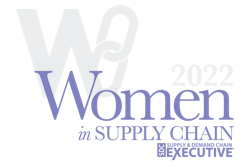
In the two years since the COVID-19 health crisis began, business leaders around the world have been in crisis-management mode to protect their people, their customers, and their enterprises. Procurement leaders have been no exception.
This article looks at the ways in which the procurement function will evolve, both to succeed in recovery efforts and to transition to a new operating model that’s fit for the future. Five central themes are examined as follows:
- Recalibrating cost-saving targets by zero-basing category and value-creation strategies
- Unlocking new opportunities by investing in supplier partnerships and joint innovations
- Accelerating value capture, leveraging digitization and spend analytics
- Enabling remote-working models by transforming to a future-ready operating model
- Helping employees adapt to new working models by reinvigorating both core and new capabilities
The emphasis on each priority is different depending on the industry context. For example, industries such as transportation and logistics, consumer goods, telecommunications, and technology are focusing more on supplier collaboration, perhaps because of the global nature of their supply chains and the disruption they have felt from movement restrictions. Traditional heavy industries, such as oil and gas, chemicals, and advanced materials (such as nanomaterials) are facing huge cost challenges resulting from significant reductions in demand, while financial services and agriculture leaders are also looking to transform their functions—not because of cost pressures, but instead to accelerate digital and spend-analytics adoption to unlock new opportunities.
1. Zero-basing value-creation strategies
Cost reduction strategies are proving increasingly hard to deliver in the current inflationary climate and the focus has switched rapidly to cost containment. Whilst these are macro factors that are being felt globally, procurement has a central role to play in efforts to raise earnings by shrinking expenditure as a percentage of revenue. We saw similar scenarios play out in the recovery efforts from the 2008 global financial crisis.
To achieve the earnings improvements many organizations are looking for, procurement leaders need to examine new ways to create value. Applying zero-basing to spend categories can reveal previously hidden resources which can prove critical in responding to significant changes in supply and demand dynamics. For example, as remote work reduces demand for office space, organizations may choose to rethink their property strategies and recalibrate their real-estate cost baselines.
The adoption of new technologies may compound zero-basing’s impact. This has been seen at a number of major telecoms companies. We have seen that several global players have embarked on a technology-enabled journey to reduce the cost of their contact centers. In most cases, costs fell by almost half while customer experience improved significantly. That success is accelerating end-to-end digitization in the form of chatbots, voice bots, and self-serve capabilities that could virtually eliminate the need for customers to contact the company.
2. Unlock new opportunities with partners
Beyond a focus on cost, companies with advanced procurement functions know that supplier collaboration offers opportunities for both parties to boost revenue and profits. Indeed, companies that innovate regularly in partnership with suppliers can achieve higher earnings growth (by up to 10 percent). We have seen more companies planning to start or actually starting joint innovation strategies with their suppliers than ever before. Focus is mainly on process, service, or product innovations although some collaborations encompass business-model innovation. Vertical integration opportunities are also emerging to open previously untapped sources of value.
Automotive manufacturers, facing cost pressures and demand shortfalls, are turning their attention to component costs by establishing joint ventures with suppliers offering leading-edge technologies. This enables these companies to reduce parts costs but also bolster supply-chain stability while extending new technologies into their product development arsenals.
3. Deploy digitization and spend analytics
More and more emphasis is being placed on digital and analytics solutions to increase procurement’s effectiveness. These technologies help identify new savings opportunities, deepen supply chain transparency, and enhance resilience while facilitating more-collaborative remote-working models.
Spend analytics in particular is the use case with the greatest potential to support procurement activities, with insights that can guide procurement functions in prioritizing value-creation opportunities and identifying the most important factors for capturing the impact.
As organizations reimagine their procurement functions, a digital roadmap can be created laying out the route to a procurement function of the future. Beginning with an assessment of the digital and analytics capabilities required along the end-to-end source-to-pay process, procurement leaders can identify the points most requiring enhancement and then prioritize the most relevant use cases.
Global technology providers are adopting digital and analytic spend solutions and are already realizing the benefits. Prior to the pandemic, they were facing cost pressures to meet aggressive targets, while data was fragmented across platforms, owners, and business units. These challenges were exacerbated by complex market dynamics and the wide-ranging impacts of the pandemic on spend categories. Additionally, long-tail spend components weren’t even being considered for optimizations because of the high manual effort required to include them.
Implementing a digital solution has taken many of these companies’ spend cubes to the next level. Procurement leaders have been able to build a balanced, cross-functional stakeholder team (including end users), who make quick progress by validating a detailed data-source landscape. Once the data is incorporated into the revamped cube, users can tailor their own cockpit-style views of category insights presented from multiple, intuitive angles. For tens of thousands of individual components, specialists can now easily identify savings opportunities corresponding with changes in procurement-volume data, including estimates of potential impact from supply-chain disruptions in specific countries and regions. Suppliers’ performance metrics are now transparent as well, enabling better-informed trade-offs.
With this menu of insights generating actionable recommendations, companies now enjoy automatic analysis of 100% of their spend categories, including their long tail, all of which is now available to procurement specialists engaged in negotiations. Decision-making processes are now twice as fast as before, despite the pandemic driven transition to remote work.
4. Enable remote working models
A significant reduction in productivity and morale was brought about by the pandemic which was mainly caused by a lack of efficiency and cohesion due to the inability to co-location. To improve both of these measures, as remote and flexible working models have become more widespread, procurement organizations have started designing and implementing a future-ready operating model. Procurement organizations that can reimagine their operating model across six enablers – process, digital, data, organization, governance, capabilities, and culture – will be best equipped to realize improved employee morale and productivity in the post-pandemic environment.
Logistics companies needing to deliver higher complexity procurement projects without adding staff have found a solution by developing an “agile procurement pool” under a virtual co-location model. This involves between 40 and 50 percent of pool staff being strategic buyers, with big-data analysts, cost engineers, negotiation experts, and other specialists providing additional capabilities. By allocating resources dynamically as needed, the agile pool provides flexible project support. Cost reductions have been substantial, but the more important impact includes improved cross-divisional and regional sharing of knowledge and best practices, stronger team morale, and better talent attraction. The ability to move between many different types of projects has turned the pool into a magnet for young professionals and high performers.
5. Deepen capabilities, both core and new
The past year has surfaced new challenges and exposed weaknesses in key procurement processes. Procurement leaders are increasingly observing capability gaps in their procurement process. This suggests that core capabilities are going to need to be reinforced through measures such as better coordination with business units to drive procurement efforts while teams are working remotely. New processes may also be needed, such as for embedding joint innovation programs with strategic suppliers.
To help address these concerns, procurement organizations will want to define best-practice processes and the capabilities needed for their execution, both within and outside the procurement team. Procurement functions can start a capability-building journey by benchmarking organization and individual capabilities, defining the gaps in core and new skills, and developing a programmatic approach to developing capabilities that addresses key skill gaps.
The needs have intensified in crisis. For example, when face-to-face negotiations become online meetings, procurement professionals need to prepare even harder, paying closer attention to small details that can easily get lost in unstable internet connections. Accordingly, multinational corporations with hundreds of procurement professionals worldwide need to deploy interactive, digital procurement training platforms whose curriculums include exercises on negotiation basics, remote communications, and COVID19 specific communications, such as tips on conveying empathy via email to suppliers going through hard times. By providing a wide range of resources on tactics and case examples, these platforms equip the global procurement teams with a set of negotiation and influencing skills that will prove essential for virtual discussions with suppliers.
Charting the way forward
Over the next 12 months and beyond, as business recovery becomes the priority for many organizations, procurement leaders can take stock by asking a few questions to evaluate how ready their function is for the new paradigm.
Are they maximizing value creation in a post-COVID world, such as through rebalancing cloud and IT infrastructure, revamping office footprints, and accelerating adoption of new automation technologies?
Have all important categories fully adapted to shifting supply and demand dynamics and supply-chain risks?
Are purchasing channels and processes enhancing user experience, minimizing value leakage, and maximizing suppliers’ performance?
How much more value could we generate in their partnering, both internally with the business, and externally with suppliers?
Where could additional investment in processes, digital, data, organization, governance, capabilities, and culture help procurement operate more efficiently and effectively?
As companies globally face a challenging new phase in the global economy, it will be tempting for procurement leaders to become either too conservative in their value-creation expectations, or too aggressive in trying to create value without the right enabling operating model elements in place. If history is any indication, it will take parallel efforts, both in creating new sources of value and in reinvigorating the operating model, for procurement to thrive.















![Pros To Know 2026 [color]](https://img.sdcexec.com/mindful/acbm/workspaces/default/uploads/2025/08/prostoknow-2026-color.mduFvhpgMk.png?ar=16%3A9&auto=format%2Ccompress&bg=fff&fill-color=fff&fit=fill&h=135&q=70&w=240)


